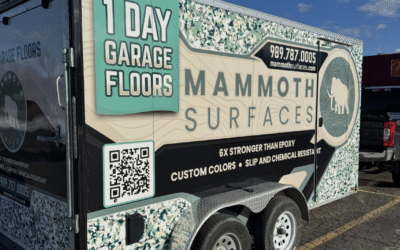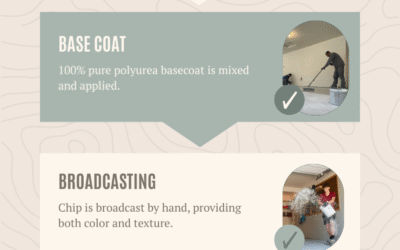If you’ve been researching garage, basement, or patio flooring, you’ve probably run into two big names: epoxy and polyurea. Both are popular, both claim to be durable and long-lasting — but what’s the real difference between them?
At Mammoth Surfaces, we get this question almost daily: “What’s the difference between epoxy and polyurea?” That’s why we put together this guide — to give you a clear, fact-based comparison. And along the way, we’ll point out our own perspective (💡🦣) — so it’s clear what’s our belief and what’s fact.
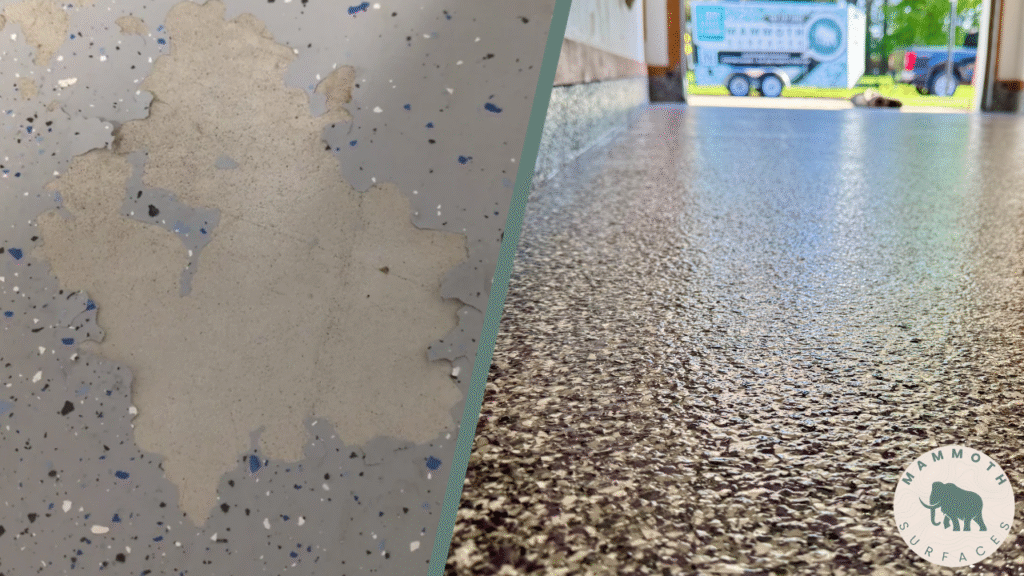
WHY DO PEOPLE CALL EVERY FLOOR COATING “EPOXY”?
Here’s the thing: almost everyone calls garage floor coatings “epoxy.” Even when they’re not. But why?
- Epoxy’s been around forever. It was one of the first coatings, so the name stuck — like calling every tissue a Kleenex.
- The industry blurs terms. “Epoxy,” “polyurea,” and “polyaspartic” often get tossed around interchangeably, which just adds to the confusion.
- It’s what people hear. Neighbors, contractors, even some installers say “epoxy floor,” so the term spreads.
💡🦣 The truth is, what we use at Mammoth isn’t epoxy at all — it’s polyurea, a longer lasting material, more flexible material that is 6x stronger than epoxy. So when you hear “epoxy,” think of it as the old-school option. Polyurea is the next generation.
WHAT IS EPOXY?
Epoxy has been around the longest and is the name most homeowners recognize. It’s strong but rigid, which makes it prone to cracking as Michigan concrete expands and contracts in freeze & thaw cycles. Epoxy floors usually last around five years before showing wear from hot tires, salt, or shovels. Another drawback is UV impact — epoxy will yellow and chalk in the sun if your garage door is open frequently. Install time is also longer, usually 3–5 days before you can park or walk on it again.
WHAT IS POLYUREA?
Polyurea is a more advanced material designed to address many of epoxy’s weaknesses. It’s extremely durable, lasting 15+ years when professionally installed, and it flexes with your concrete through Michigan’s constant freeze & thaw cycles. Polyurea is also UV stable, so it won’t yellow or fade in sunlight. One of the biggest benefits is speed — polyurea cures in just 24 hours, meaning you can use your garage or patio the very next day.
WHAT IS POLYASPARTIC?
Polyaspartic is actually a type of polyurea, and it’s often used as the topcoat layer in professional systems. Its main strength is UV resistance — polyaspartic helps keep the surface from yellowing or fading over time. Even some epoxy systems now add a polyaspartic topcoat to reduce sun damage.
💡🦣 At Mammoth Surfaces, our installations combine polyurea with a polyaspartic top layer so homeowners get the best of both: deep concrete bonding and long-lasting UV stability.
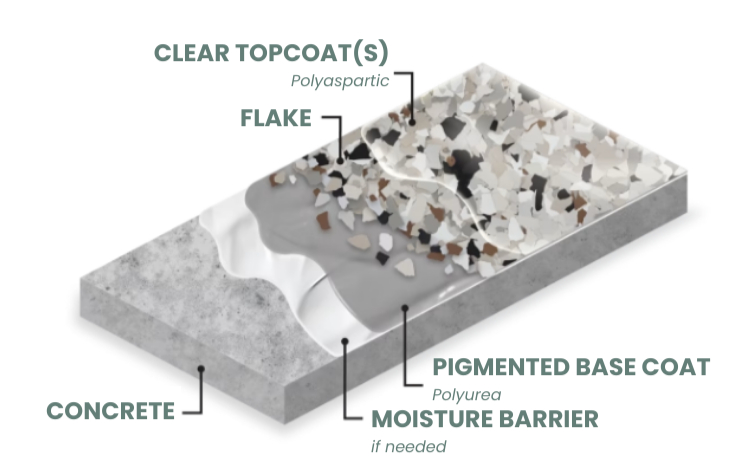
WHY WE CHOSE POLYUREA AT MAMMOTH SURFACES
When we started Mammoth Surfaces, we knew we didn’t want to offer just another “epoxy garage floor.” We researched both options, looked at how they performed in Michigan’s tough conditions, and asked ourselves: Would this be a floor we’d want in our own homes?
💡🦣 The answer was clear. While epoxy is common, it takes multiple days to install, doesn’t hold up well to freeze & thaw cycles, and simply couldn’t meet the long-term standards we wanted for our customers. Polyurea, on the other hand, offered a one-day install and a floor built to last for years to come.
That’s why we made the choice to exclusively offer polyurea — not because it’s the newest thing, but because it’s the right thing for homeowners who value quality.
📊 HEAD-TO-HEAD COMPARISON
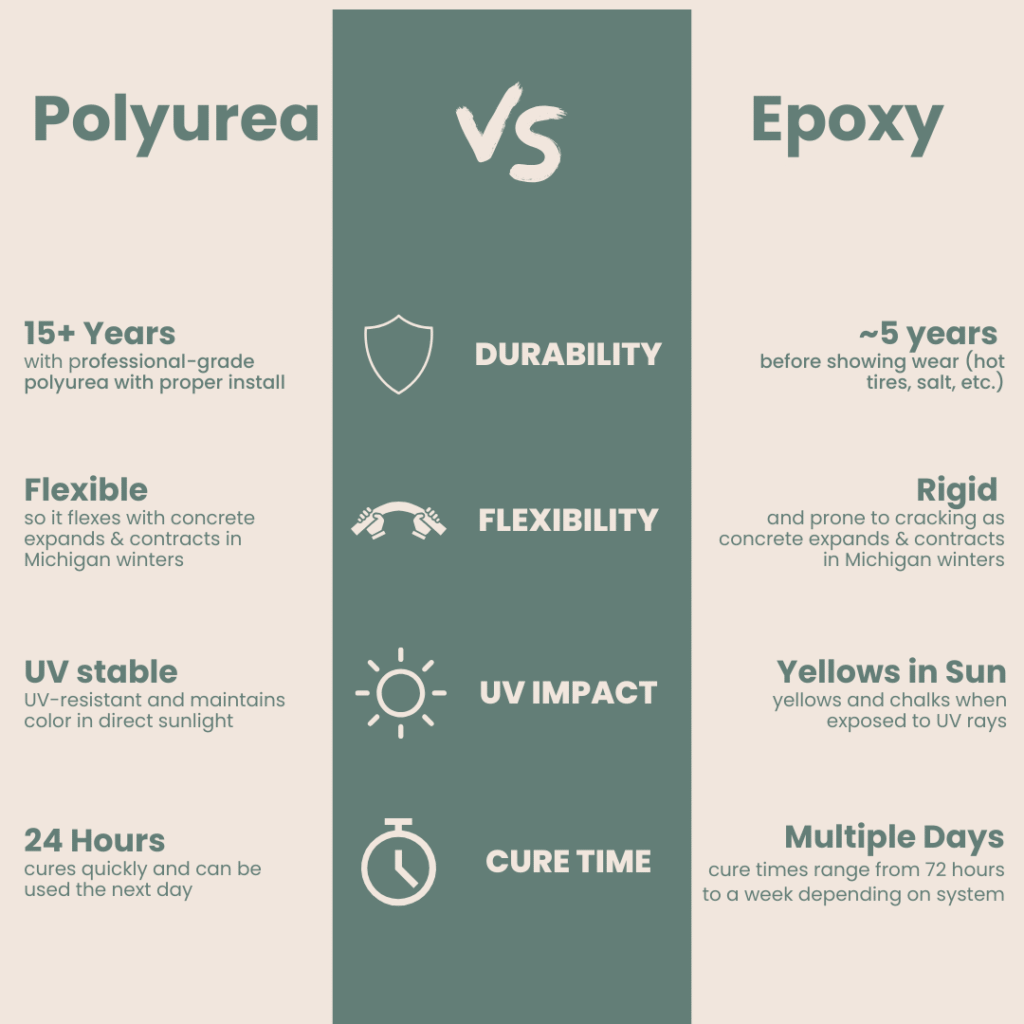
WHEN EPOXY STILL MAKES SENSE
To be fair, epoxy isn’t going away anytime soon — and there are times it might be the right choice.
- Specialty looks: Epoxy is often used for metallic floors or unique design effects that aren’t achievable with polyurea.
- Low-traffic spaces: In areas that don’t face heavy wear and tear, epoxy can still work.
- Budget installs: If cost is the only concern and you’re okay with replacing it every few years, epoxy may fit.
💡🦣 For Michigan garages, basements, and patios where durability and freeze & thaw flexibility matter most, we believe polyurea is still the clear winner. But knowing when epoxy has a role helps you make a truly informed choice.
WHICH SHOULD YOU CHOOSE?
If you’re looking for a quick, cheap option and don’t mind redoing it every few years, epoxy might do the job. But if you want a floor that truly lasts, stands up to Michigan’s winters, and adds real value to your home, polyurea (with a polyaspartic topcoat) is the smart choice. Think of it as the difference between buying a disposable tool and investing in one that lasts a lifetime.
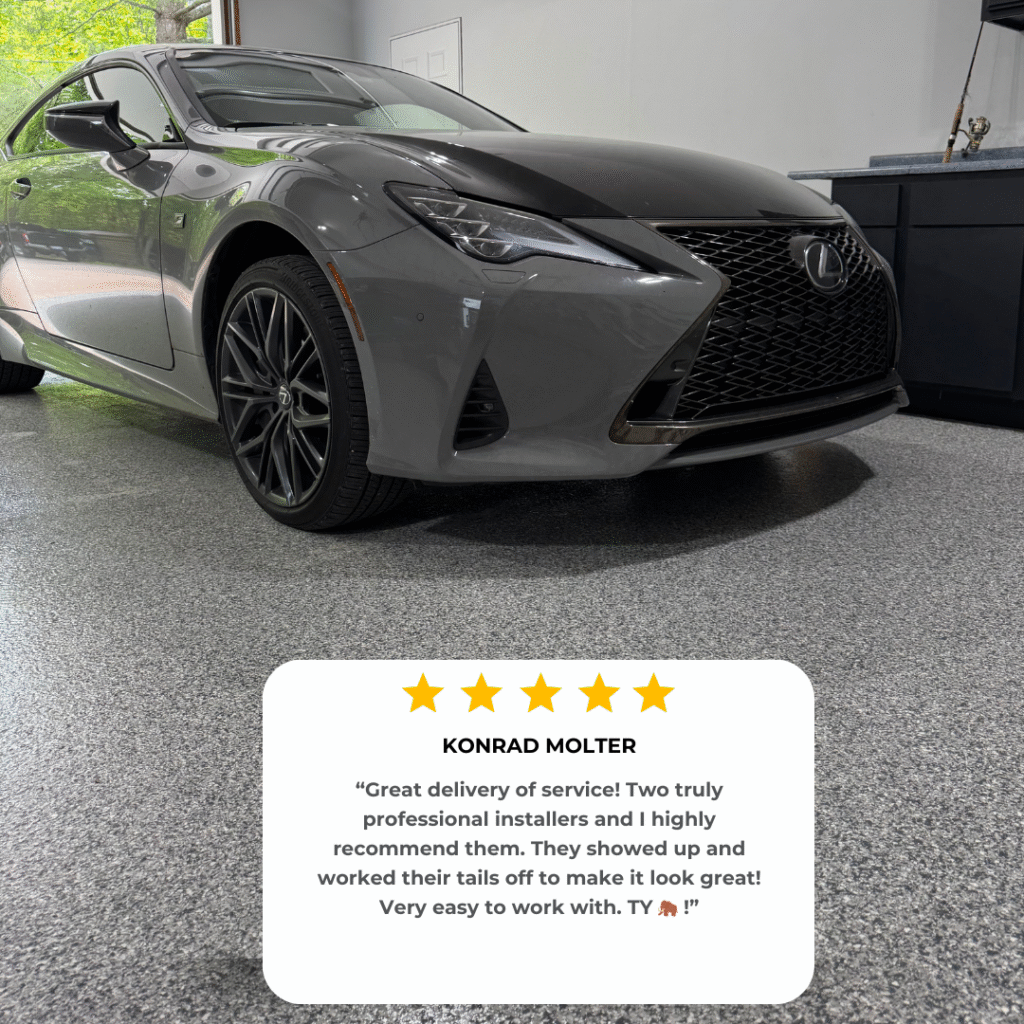
💡🦣 At Mammoth Surfaces, we believe doing the job right the first time matters — and your concrete deserves more than a short-term fix. With polyurea, you get a floor that’s built to last: strong enough to take on Michigan’s weather, spills, and daily wear without breaking a sweat.
👉 Ready to upgrade? Schedule your free estimate!

